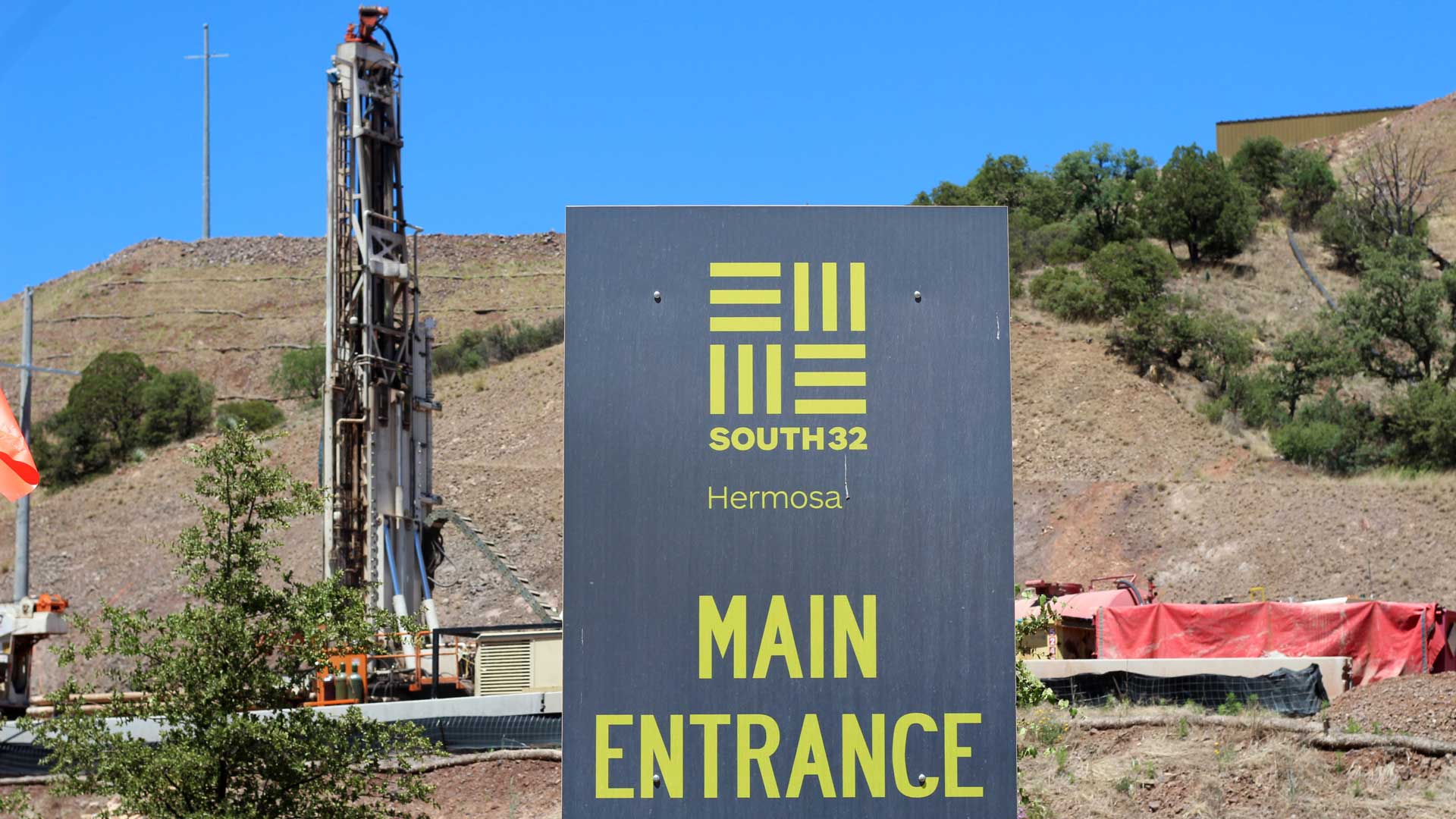 The entrance of the South32 Hermosa mine site, a critical minerals project that looks to source manganese and zinc.
The entrance of the South32 Hermosa mine site, a critical minerals project that looks to source manganese and zinc.
The Arizona Court of Appeals upheld that the Hermosa Mine Project’s effluent discharge meets state standards, according to a decision filed late last month.
The opinion delivered by Judge David D. Weinzweig says, “An environmental non-profit interprets those words to mandate that mines gather and test the groundwater as it hovers on the designated point of compliance, which would require mines to dig a monitoring well at that point. The Arizona Department of Environmental Quality (“ADEQ”) disagrees, insisting that mines can determine that groundwater is clean at the point of compliance with assorted methods and measurements, without having to dig the well at that point.”
ADEQ first issued an Aquifer Protection Permit (APP) in 2018, allowing South32 to discharge 172,000 gallons of treated effluent –about 120 gallons of treated water per minute– from its water treatment plant into the Alum Gulch, one of two watersheds that the Hermosa Project extends across.
In that permit, ADEQ designated three physical points of compliance where South32 had to demonstrate that the groundwater remained free from pollutants.
South32 was also authorized to build three facilities at that time, including a water treatment plant, a lined tailings storage facility, and an underdrain collection pond.
In 2020, a “significant amendment” was granted to increase South32’s water treatment capacity for accessing submerged ore according to court documents.
The amendment raised the discharge limit by 3,750 percent, allowing about 4,500 gallons of discharge per minute to be released from a second water treatment facility into Harshaw Creek.
The Patagonia Area Resource Alliance (PARA), a watchdog conservation group, joined with eight other organizations to challenge the amended permit to the Water Quality Appeals Board.
The case was heard by the Office of Administrative Hearings, which ruled in favor of ADEQ and South32 on all points in June 2022.
PARA appealed the decision to the Arizona Superior Court, arguing that South32 should be required to install a monitoring well at the point of compliance under state law.
The group also contended that the court abused its discretion by upholding the permit amendment.
In 2023, the court ruled in South32’s favor, confirming the permit’s validity.
The ruling says that ADEQ officials reviewed the design and technology of the water treatment plant to ensure compliance with Aquifer Water Quality Standards.
The agency also relied on South32’s monitoring system at and near the new treatment facility, requiring effluent to be tested for pollutants before being discharged into Harshaw Creek.
“In sum, Arizona mines can determine the quality of groundwater at a particular point of compliance without digging a monitoring well at that point, unless ADEQ finds and requires otherwise,” the opinion reads. “We affirm.”
The mine aims to produce two federally designated critical minerals: zinc and manganese.
In a written statement by Hermosa President Pat Risner said the ruling aligns with previous court decisions affirming the project’s water treatment and discharge plans meet state standards.
“We’re designing Hermosa from the ground up with advanced technology and monitoring systems to deliver on that commitment, including using 90% less water than other mines in the region,” Risner said.

By submitting your comments, you hereby give AZPM the right to post your comments and potentially use them in any other form of media operated by this institution.